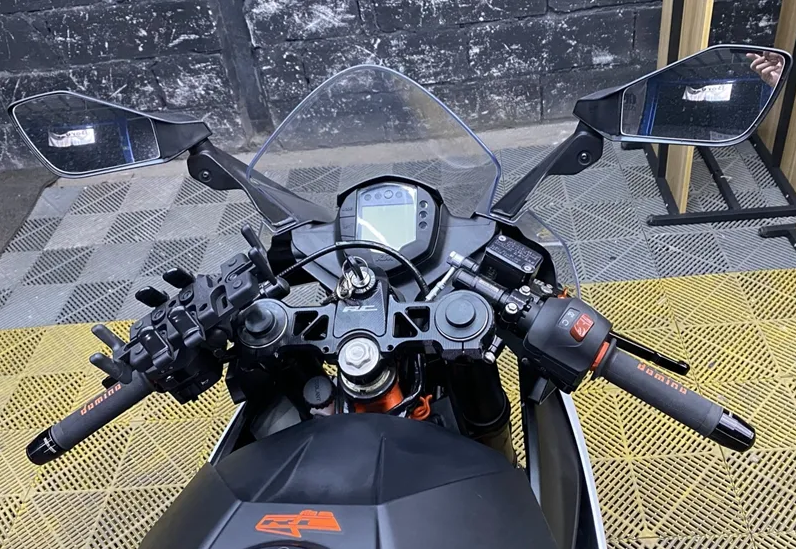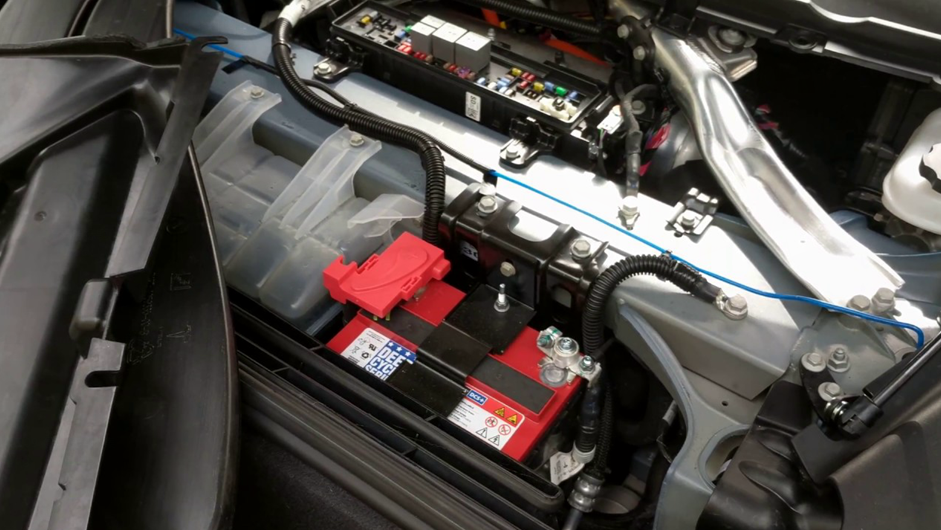Չինական լոկոմոտիվի մեկնարկի մարտկոցի ժամկետը. արդյունավետ էներգիա ձեր գնացքի համար
As trains are one of the most important modes of transportation for people and goods, it is vital that they are powered by efficient and reliable systems. Among these systems is the locomotive starter battery, which provides the initial power needed to start the train’s engine. In this article, we will explore the importance of locomotive starter batteries and how they work, as well as the different types available on the market.
The locomotive starter battery is a vital component of a train’s electrical system. It provides the initial power needed to start the engine, after which the alternator takes over and powers the train’s electrical systems. Without a functioning starter battery, a train would not be able to start its engine, which would lead to delays and potentially cause safety issues.
The basic principle behind the locomotive starter battery is that it stores electrical energy in chemical form, which can then be released as electrical energy when needed. The battery is made up of a series of cells, each containing lead plates that are immersed in a solution of sulfuric acid. When the battery is charged, the lead plates become coated with lead sulfate, which stores the electrical energy. When the battery is discharged, the sulfuric acid reacts with the lead sulfate to create lead oxide and sulfuric acid, which releases the stored electrical energy.

There are several different types of locomotive starter batteries available on the market, each with its own advantages and disadvantages. The most common type is the lead-acid battery, which is relatively inexpensive and has a long life span. However, lead-acid batteries require regular maintenance and can be heavy. Lithium-ion batteries are another option, which are lighter and require less maintenance, but they can be more expensive and have a shorter life span.
When choosing a locomotive starter battery, it is important to consider factors such as the train’s weight and power requirements, as well as the battery’s voltage and capacity. It is also important to choose a battery that is compatible with the train’s charging system and electrical requirements.
In conclusion, the locomotive starter battery is a vital component of a train’s electrical system, providing the initial power needed to start the engine. There are several different types available on the market, each with its own advantages and disadvantages. When choosing a battery, it is important to consider factors such as the train’s weight and power requirements, as well as the battery’s voltage and capacity. With the right starter battery, trains can run efficiently and reliably, ensuring the safe and timely transportation of people and goods.
-
 In today's fast-paced world, it's essential to stay connected and powered up at all times. Be it during a road trip, camping, or even at home, we rely heavily on electronic devices to stay connected and entertained. However, a dead battery can quickly turn any situation into a nightmare, leaving you stranded and helpless. That's where an emergency starter battery...Կարդալ ավելին
In today's fast-paced world, it's essential to stay connected and powered up at all times. Be it during a road trip, camping, or even at home, we rely heavily on electronic devices to stay connected and entertained. However, a dead battery can quickly turn any situation into a nightmare, leaving you stranded and helpless. That's where an emergency starter battery...Կարդալ ավելին -
 Lithium batteries have become an essential part of our daily lives. From powering smartphones to electric vehicles, these batteries have revolutionized the way we use and consume energy. In this article, we will explore the various aspects of lithium batteries, including their history, chemistry, advantages, and disadvantages. History of Lithium Batteries The development of lithium batteries can be...Կարդալ ավելին
Lithium batteries have become an essential part of our daily lives. From powering smartphones to electric vehicles, these batteries have revolutionized the way we use and consume energy. In this article, we will explore the various aspects of lithium batteries, including their history, chemistry, advantages, and disadvantages. History of Lithium Batteries The development of lithium batteries can be...Կարդալ ավելին -
 In today's technologically advanced world, industrial power products batteries play a crucial role in powering the backbone of modern industries. These batteries are not only essential for providing a reliable source of power but also contribute to enhancing efficiency, productivity, and sustainability. Industrial power products batteries are specifically designed to meet the demanding power needs of various industries, including...Կարդալ ավելին
In today's technologically advanced world, industrial power products batteries play a crucial role in powering the backbone of modern industries. These batteries are not only essential for providing a reliable source of power but also contribute to enhancing efficiency, productivity, and sustainability. Industrial power products batteries are specifically designed to meet the demanding power needs of various industries, including...Կարդալ ավելին -
 In today's world, the demand for reliable power supply is increasing rapidly. Whether it's for a car, a boat, or a home, everyone needs a consistent and long-lasting source of power. One of the most efficient and dependable power sources available in the market is the High Capacity 12V 100Ah LiFePO4 Battery Pack. Lithium Iron Phosphate (LiFePO4) battery technology...Կարդալ ավելին
In today's world, the demand for reliable power supply is increasing rapidly. Whether it's for a car, a boat, or a home, everyone needs a consistent and long-lasting source of power. One of the most efficient and dependable power sources available in the market is the High Capacity 12V 100Ah LiFePO4 Battery Pack. Lithium Iron Phosphate (LiFePO4) battery technology...Կարդալ ավելին -
 Low-speed electric vehicles (LSEVs) are compact electric vehicles designed for short-distance travel at relatively low speeds. They are typically used in urban environments, industrial areas, and campuses for transportation purposes. LSEVs are known for their small size, low cost, and eco-friendly operation. Lithium batteries are commonly used in low-speed electric vehicles due to their high energy density, lightweight nature, and...Կարդալ ավելին
Low-speed electric vehicles (LSEVs) are compact electric vehicles designed for short-distance travel at relatively low speeds. They are typically used in urban environments, industrial areas, and campuses for transportation purposes. LSEVs are known for their small size, low cost, and eco-friendly operation. Lithium batteries are commonly used in low-speed electric vehicles due to their high energy density, lightweight nature, and...Կարդալ ավելին -
 Ժամանակակից ժամանակակից աշխարհում, որտեղ արդյունաբերությունները մեծապես հենվում են տեխնոլոգիաների և մեքենաների վրա, հուսալի և արդյունավետ էլեկտրամատակարարում ունենալը չափազանց կարևոր է: Այստեղ է, որ արդյունաբերական մարտկոցների լիցքավորիչները վճռորոշ դեր են խաղում: Այս սարքերը նախագծված են ապահովելու, որ արդյունաբերական մարտկոցները լիցքավորվեն արդյունավետ և անվտանգ՝ ապահովելով կենսական կարևորագույն սարքավորումների և մեքենաների կայուն էներգիայի մատակարարում: Արդյունաբերական մարտկոց...Կարդալ ավելին
Ժամանակակից ժամանակակից աշխարհում, որտեղ արդյունաբերությունները մեծապես հենվում են տեխնոլոգիաների և մեքենաների վրա, հուսալի և արդյունավետ էլեկտրամատակարարում ունենալը չափազանց կարևոր է: Այստեղ է, որ արդյունաբերական մարտկոցների լիցքավորիչները վճռորոշ դեր են խաղում: Այս սարքերը նախագծված են ապահովելու, որ արդյունաբերական մարտկոցները լիցքավորվեն արդյունավետ և անվտանգ՝ ապահովելով կենսական կարևորագույն սարքավորումների և մեքենաների կայուն էներգիայի մատակարարում: Արդյունաբերական մարտկոց...Կարդալ ավելին -
 Քանի որ աշխարհը շարժվում է դեպի վերականգնվող էներգիայի աղբյուրները, էներգիայի արդյունավետ պահպանումը դառնում է ավելի կարևոր, քան երբևէ: Բարձր հզորությամբ 12V 100Ah LiFePO4 մարտկոցը խաղի փոփոխիչ է էներգիայի պահպանման աշխարհում: LiFePO4 մարտկոցները լիթիում-իոնային մարտկոցների տեսակ են, որոնք օգտագործում են լիթիումի երկաթի ֆոսֆատը որպես կաթոդ նյութ: Նրանք հայտնի են էներգիայի բարձր խտությամբ, երկար...Կարդալ ավելին
Քանի որ աշխարհը շարժվում է դեպի վերականգնվող էներգիայի աղբյուրները, էներգիայի արդյունավետ պահպանումը դառնում է ավելի կարևոր, քան երբևէ: Բարձր հզորությամբ 12V 100Ah LiFePO4 մարտկոցը խաղի փոփոխիչ է էներգիայի պահպանման աշխարհում: LiFePO4 մարտկոցները լիթիում-իոնային մարտկոցների տեսակ են, որոնք օգտագործում են լիթիումի երկաթի ֆոսֆատը որպես կաթոդ նյութ: Նրանք հայտնի են էներգիայի բարձր խտությամբ, երկար...Կարդալ ավելին

